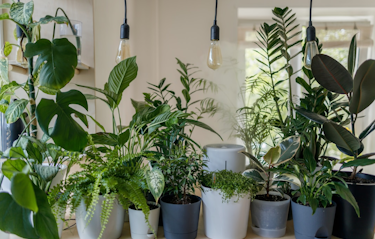
How To Trim Pothos
- Easy Care
- Araceae
- Large
- Evergreen Tropical Vines
We independently select everything we recommend. When you buy through our links, we may earn a commission.
The polka dot plant (Hypoestes phyllostachya) is a popular houseplant known for its colorful and distinctive leaves. Propagation involves taking cuttings from the parent plant and rooting them in soil or water to create new plants.
Published on 21 August, 2023 by Oliver Rouane-Williams
There are several common ways to propagate polka dot plant cuttings, including stem-cutting propagation, water propagation, and soil propagation.
Stem-cutting propagation involves taking a stem cutting from the parent plant, removing the lower leaves, and placing the cutting in soil until it develops roots.
Here are the steps for stem-cutting propagation:
Look for a healthy polka dot plant with no signs of disease or pests. Select one with a stem several inches long and several sets of leaves.
Use sharp scissors or pruning shears to make a clean cut just below a node (where a leaf is attached to the stem). Remove any leaves from the lower half of the stem.
You may dip the cut end of the stem into rooting hormone powder or gel to promote root growth.
Place the stem cutting in a small pot or container with moist, well-draining soil.
Keep the soil moist and place the cutting in bright, indirect light. Make sure to monitor the cutting for signs of dehydration or overwatering.
After a few weeks, roots should begin to develop. Gently tug on the cutting to see if it has rooted. Once roots are established, transplant the cutting into a pot filled with well-draining potting soil.

Water propagation is similar, but instead of placing the stem cutting directly into the soil, it is placed in water until it develops roots.
Steps one and two are the same as stem cutting above.
Place the stem cutting into a container filled with room-temperature water. Make sure that at least one node is submerged in the water.
Put the container in bright, indirect light and change the water every few days to prevent it from becoming stagnant. Add a little liquid fertilizer to the water to promote growth.
Once the roots have developed, carefully remove the cutting from the water and plant it in a pot filled with well-draining potting soil.
Water the soil thoroughly and place the pot in bright, indirect light. The soil should be moist, not waterlogged, and you shouldn’t allow it to dry out completely.
After a few weeks, the cutting should establish and grow new leaves.
Polka dot plants, also known as freckle face or pink polka dot plants, are native to Madagascar and are popular tropical plants among indoor growers. These indoor plants are prized for their beautiful variegation and colorful leaves that range from pink to red, green, and white.
Mix and match polka dot plants with other houseplants like begonia maculata, fittonia, and Pothos to create a visually stunning indoor garden.

Polka dot plants prefer bright, indirect light and high humidity. Low light causes them to become leggy, while direct sunlight makes their leaves droop and burn. Avoid placing your polka dot plant in direct sun to maintain healthy green leaves.
Water your polka dot plant regularly and generously, but avoid overwatering. Allow the top layer of soil to dry out slightly before watering again.
Watch out for common pests such as mealybugs and aphids. If you notice any signs of infestation, treat your plant with an insecticide or wipe down the leaves with soapy water.
As your polka dot plant grows, you may need to transfer it to a larger pot to accommodate its root system. When repotting, use a well-draining potting mix and provide adequate drainage holes to prevent root rot.
Polka dot plants thrive in high humidity, so use a humidifier or place a tray of water near your plant if you live in a dry climate.
Delivered to your inbox every Saturday morning








